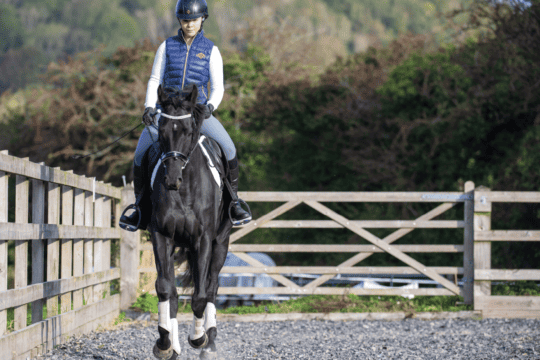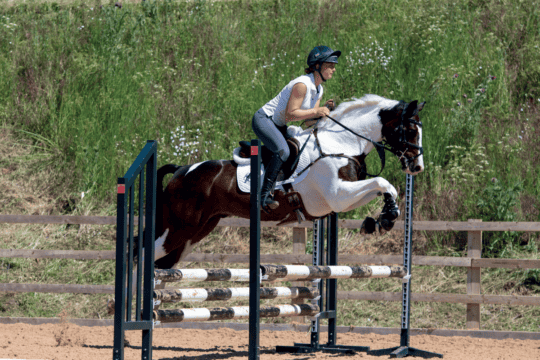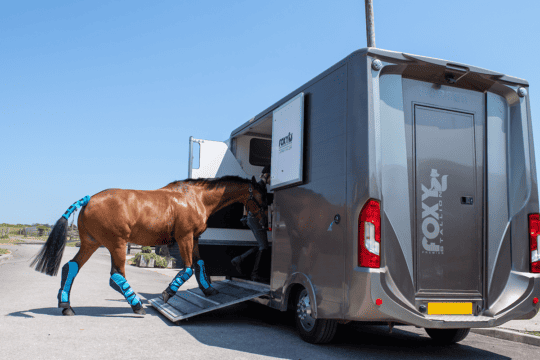-
Riding Schooling and Training
-
Health and Veterinary
-
Management
-
Mind Matters
-
Buying and Selling
-
Insurance Advice
FAQs
Rein-back isn’t just for the dressage arena, it’s a useful skill to have for many situations, such as opening gates and manoeuvring in tight spaces. Dressage rider Tania Grantham shows you how to master it
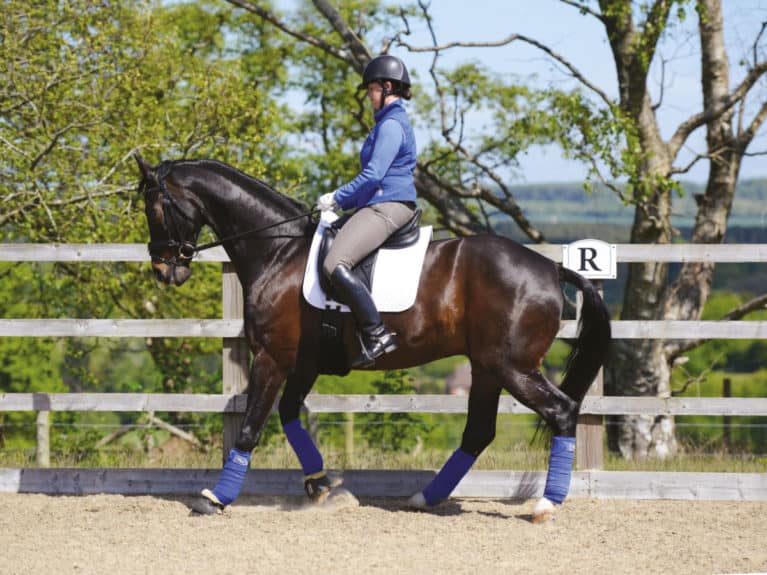
When it comes to rein-back, you either love it and relish the chance to show it off or you hate it and do your best to avoid tests with it in! However you feel about it, though, rein-back is a fantastic exercise for teaching your horse how to take more weight on his haunches, which will help to improve his balance, so it’s well worth taking the time to get to grips with it. Plus, it’s a useful thing to be able to do.
What is a correct rein-back?
- Start with a square, immobile halt. Some dressage tests state the amount of time you should remain in the halt, but if they don’t, you need to make sure that you’re clearly immobile. To ensure this, think of taking a breath before you ask your horse to move back.
- Your horse should move smoothly backwards with his legs moving in clean diagonal pairs. His poll should remain the highest point and his nose should be on the vertical, not tucked in. As he moves backwards, his croup should lower.
- After the rein-back, he should move directly forwards into whichever pace is required, ideally keeping his weight on his hindlegs.
TOP TIP
Have a helper on the ground who can tell you whether your horse is square before you ask him to step back and how correct your rein-back was.
How to ask for rein-back
There are many different ways to ask for rein-back, but the method below is one that I’ve found to be very successful for teaching horses the movement and for helping those who have previously struggled to understand it.
- To establish the halt, your seat should remain immobile while your legs ask your horse to keep a contact with the bit. Make sure you keep your rein contact soft.
- To prepare your horse to go backwards, move both your legs back from your hip, keeping your weight down through the back of your seat.
- To ask your horse to move back, you need to use a combination of leg, seat and rein. Keep your weight down through the back of the saddle and press it backwards, while your upper body stays tall. This asks your horse to lower his croup as he moves back. Your leg and rein work in alternate pairs – the leg and rein on one side ask at the same time, then the other. The rein that’s not active should soften to reward your horse and the leg that is passive remains back, but releases the pressure. This will ask your horse to move back in diagonal pairs.
- To stop your horse from moving backwards, release the pressure with your legs and move them forwards to the normal position. Stop applying backwards pressure with your seat and keep it neutral.
- To ask your horse to move forwards, apply the same leg and seat aids as you would moving from halt to any other pace.
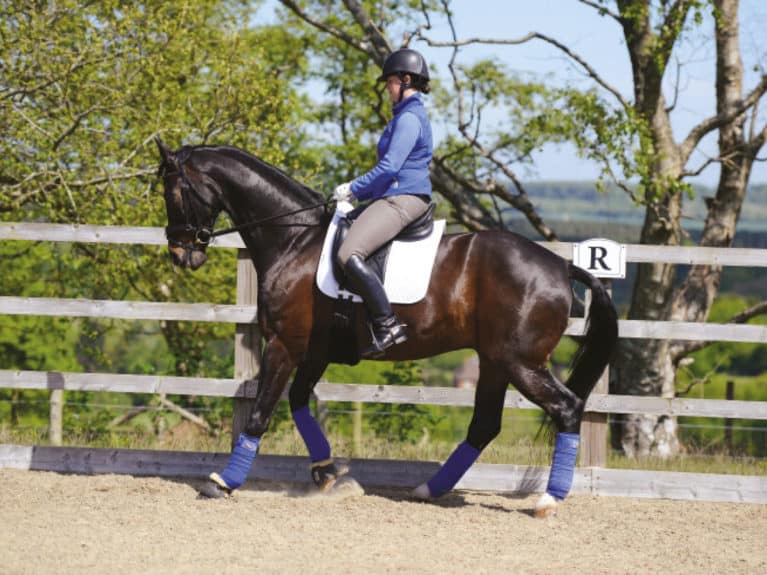
DID YOU KNOW?
In dressage, rein-back first appears at Novice level and continues to appear on and off at every level up to and including Grand Prix.
Common faults
Despite being a relatively simple movement, rein-back is quite a difficult exercise. Some horses find it tricky if they don’t understand the aids or if they find it difficult to take extra weight on their hindlegs, but be patient and persevere, as it’ll take time for your horse to develop the strength to do it correctly. However, many mistakes that occur during rein-back are caused by the rider. Here are the most common faults and how to put them right…
Halt not square
A square halt is the best preparation for a good rein-back – if it’s not square, problems will start to creep in. To correct this, improve the quality of the walk and collect him just before you ask for the halt.
Legs not moving in clear diagonal pairs
Sometimes his legs move individually, rather than in diagonal pairs and this is often a result of the halt not being square. It’s normally a foreleg that moves too slowly, causing it to be out of rhythm. To correct this, you need to improve the halt, but often a quick tap with your leg prior to your horse stepping back can quicken his forelimb reaction and restore the clean diagonal pair.
Becoming crooked as he steps back
Going crooked is another way that your horse can try to evade taking weight on his haunches. It’s a common misconception that during rein-back you steer with your legs. Although your legs do have an effect on your horse’s straightness, correcting him with your leg often results in him swinging his haunches the other way. It’s actually your seat that steers him.
If your horse wants to move his haunches to the right, he’ll push your right seat bone up and forwards. To straighten him, lower your right seat bone and push it backwards.
Lazy move-off
Your horse can appear to be lazy when he moves off if your aids are unclear. Make sure that you release the pressure with your leg and move it forwards to the normal position before applying pressure to ask for the next pace. If your horse is genuinely being lazy to react, then you need to work on his reactions in general – performing lots of transitions is a great way of improving this.
Loss of outline
Some horses try to change their outline during the rein-back. There are two main causes of this problem…
- You might be being too strong with your hands. Although it’s called rein-back, it’s really your leg and seat that are responsible for moving your horse backwards, your rein just provides a boundary so that your horse understands that there’s no option to move forward.
By using the rein aid alternately, it gives you a chance to soften your hand and, therefore, your horse’s outline. - Your horse might be finding the rein-back difficult and is expressing this by having a tight neck. Again, by using alternate reins it allows you to soften your hands and ask your horse to soften his neck. Don’t saw on his mouth or fiddle with the reins too much to bring his head down.
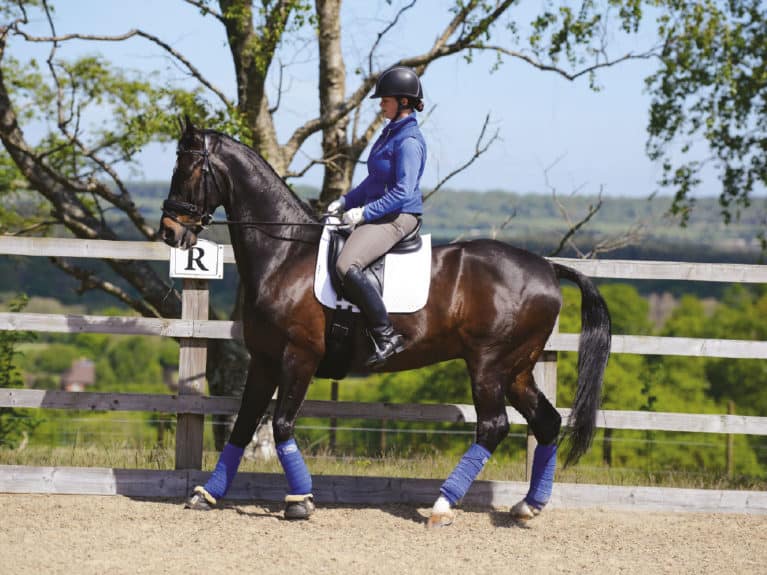
Horse not lowering croup, which often results in an increased or decreased tempo in rein-back
Again, this has two main causes…
- You may be tipping forwards during the rein-back, causing your seat to lighten, which means that you’ll lose control of your horse’s balance and the tempo of his steps.
- Your horse may be finding rein-back difficult, either shuffling back with tiny steps that don’t lower the croup or rushing back to try to run through the exercise. Both can be corrected by changing your seat pressure. If you take your shoulders back a little and push down with the back of your seat, you can ask your horse to take more weight behind.
TOP TIP
It’s a common fault for riders to look down and collapse in the chest when riding rein-back, so remember to look up!




